MORE SEASONAL CUSTOMS
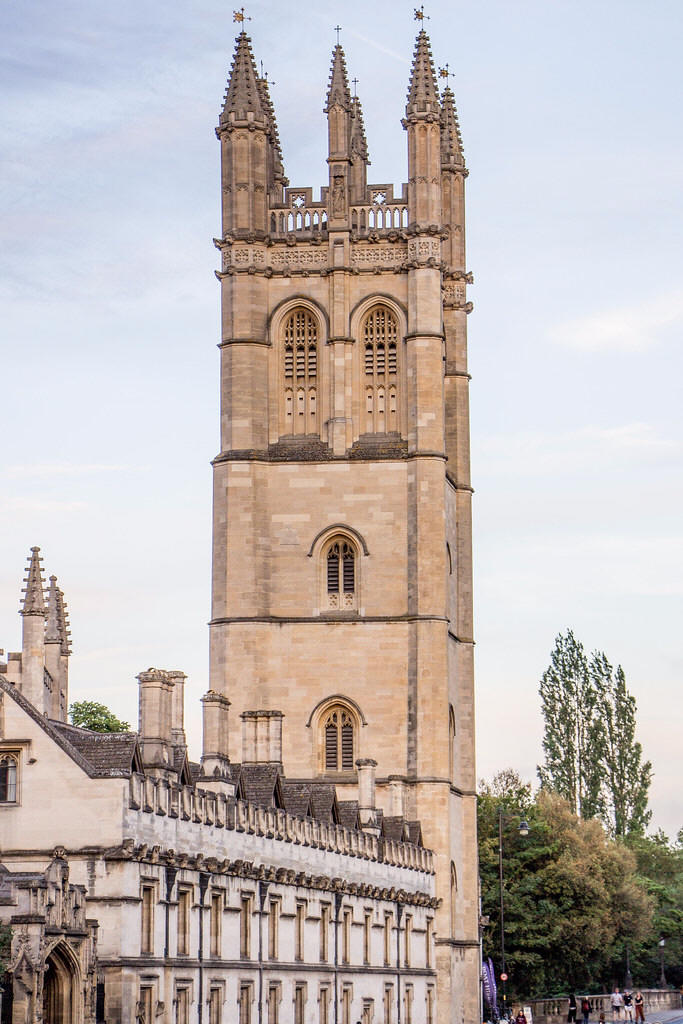 It
wouldn’t seem too long after Easter that Maytime customs were taking place. In
our previous issue I mentioned a couple of local examples - and getting up early
to go through the annual re-enactments seems to have been de rigueur.
Even now, the choir still sings from the tower of Magdalen College, Oxford, at
six o’clock on May Day morning – if you can be up in time!
It
wouldn’t seem too long after Easter that Maytime customs were taking place. In
our previous issue I mentioned a couple of local examples - and getting up early
to go through the annual re-enactments seems to have been de rigueur.
Even now, the choir still sings from the tower of Magdalen College, Oxford, at
six o’clock on May Day morning – if you can be up in time!
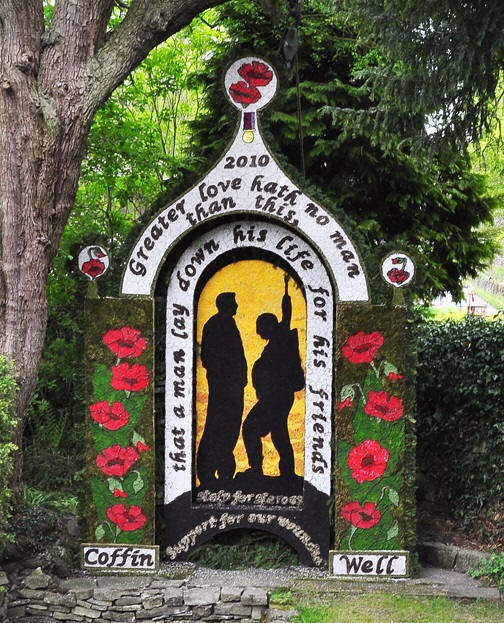 In
early May the first well dressings appear in the Peak District of Derbyshire and
these go on right through the summer to late September. This custom has proved
to be very durable: just ‘Google’ to find out more. A visit, planned to take in
the magnificent works of floristry and art at several villages in the one day,
will long remain in your mind.
In
early May the first well dressings appear in the Peak District of Derbyshire and
these go on right through the summer to late September. This custom has proved
to be very durable: just ‘Google’ to find out more. A visit, planned to take in
the magnificent works of floristry and art at several villages in the one day,
will long remain in your mind.
The next major Church celebration following on from Easter
is Pentecost – Whitsuntide to some. In earlier times Whit Monday had the effect
of a starter’s gun on teams of Morris Dancers in the South Midlands area.
Suddenly they would be out and about: harbingers of better weather and more
relaxed times, perhaps. Clad mainly in cricket whites, some form of
flower-bedecked head gear, coloured baldricks (crossed sashes) and with bellpads
on their shins,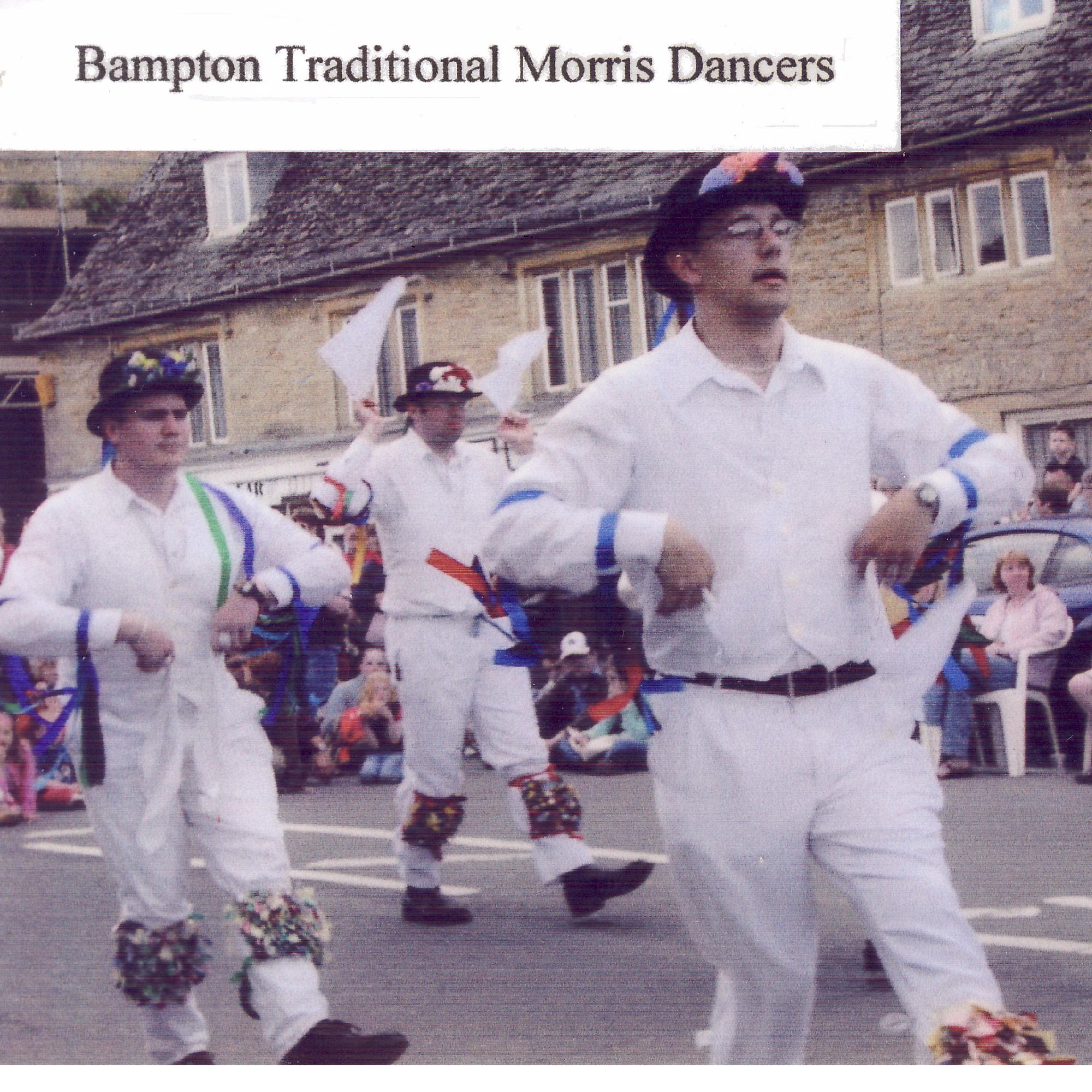 there was certainly no ignoring them. The sound of the music and the bells, the
clashing of sticks, the waving of handkerchiefs and the droll activities of the
Fool would see to that.
there was certainly no ignoring them. The sound of the music and the bells, the
clashing of sticks, the waving of handkerchiefs and the droll activities of the
Fool would see to that.
Bampton, to the west of Oxford, still maintains this tradition of a full day’s dancing within the confines of the village – although it’s now held on the late May Bank Holiday Monday, and that doesn’t always coincide with Whit Monday. Believe it or not, Bampton usually puts out no less than three teams of its own; other guest teams are invited, so there’s much to see, and there’s lots of singing in the pubs too.
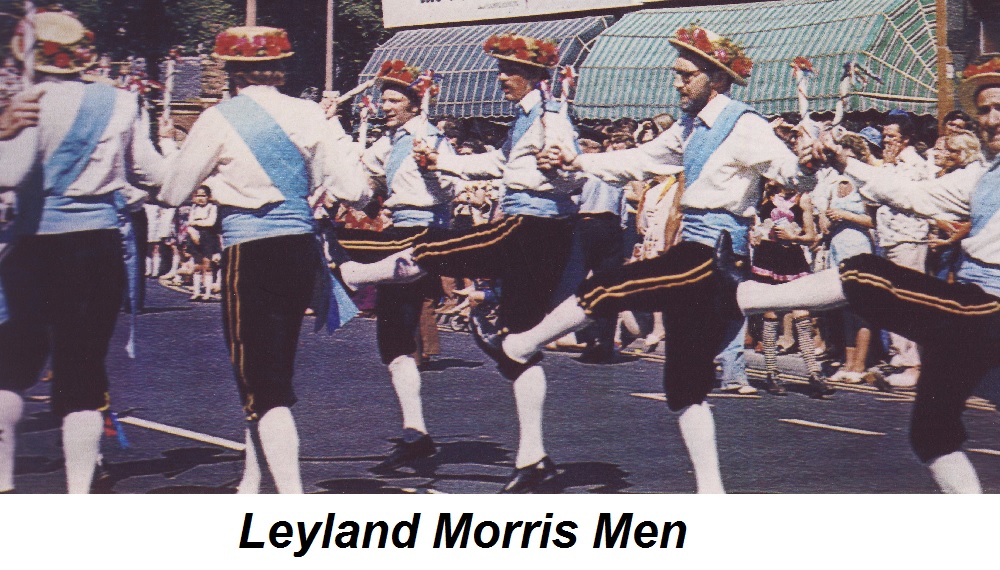 The
processional form of the Morris has a strong link to the North West of England
and is a summertime activity too. Sometimes it would be linked with the annual
processions of Friendly Societies or local church Walking Days; sometimes it was
specifically linked with Rush-cart Processions. These date back to times when
churches only had earthen floors and some form of ‘carpeting’ was needed – often
rushes. Strong points in their favour: they were easily available and cost
nothing!
The
processional form of the Morris has a strong link to the North West of England
and is a summertime activity too. Sometimes it would be linked with the annual
processions of Friendly Societies or local church Walking Days; sometimes it was
specifically linked with Rush-cart Processions. These date back to times when
churches only had earthen floors and some form of ‘carpeting’ was needed – often
rushes. Strong points in their favour: they were easily available and cost
nothing!
As time went by churches covered the earth floors with
stone flags and later still with wooden floorboards. Rushcarts were then
redundant. However, some places insisted on keeping to the annual rush-bearing
re-enactment and you might be quite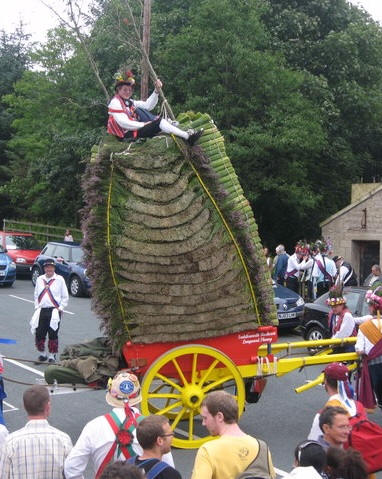 surprised, if you were to delve into the archives of churches not too far from
Fulwood, at how many mention these annual events.
surprised, if you were to delve into the archives of churches not too far from
Fulwood, at how many mention these annual events.
In a few places, such as Ambleside and Grasmere in the Lake District, they have kept up their particular form of rush-bearing re-enactment. At a handful of other places the construction of a modern, full-blown rush-cart has been accomplished. Most notable is that at Saddleworth, near Oldham. The village of Uppermill is the hub and the Saturday procession pays a visit to the neighbouring villages of Greenfield, Dobcross and Delph. It’s a splendid sight: a two ton cart being hauled around, with dancing by various teams at spots along the way. The Sunday is taken up with a Church Service at St Chad’s, up above Uppermill, followed by dancing, music and a wide range of other activities. You can have a go at ‘gurning’ too i.e. pulling funny faces whilst looking through a horse collar! This year’s event is scheduled for Saturday & Sunday, 20th & 21st August.
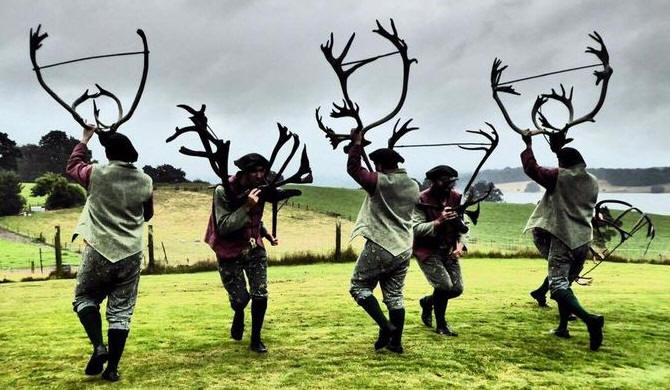
On the first Monday, after the first Sunday, after the 4th September you could always visit Abbots Bromley, near Uttoxeter in Staffordshire, to see the annual appearance of the Horn Dancers. Following a special Service the dancers each take down a set of stags’ antlers from the walls of the Church and trot off around the village. They’re accompanied by music and a variety of other characters. The dance is necessarily performed at a stately speed - each set of antlers weighs in at more than 20 kilos and they are large and cumbersome. Nevertheless, the magic of the dance is taken through lanes, fields and gardens – and to the forecourt of the local pub too. Who first ever had such an idea? Who knows? But it must have seemed like a good idea at the time!! – and it still goes on.
Roy Smith